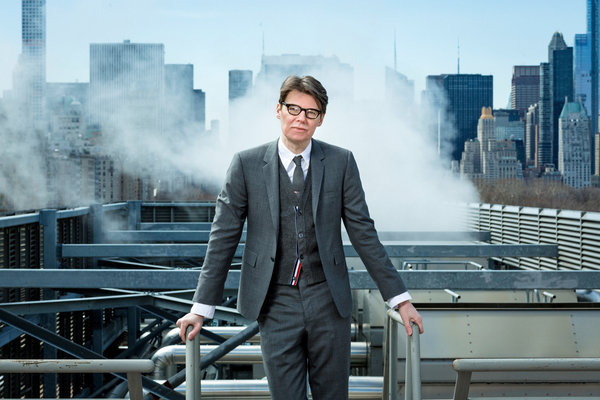
When the Costume Institute at the Metropolitan Museum of Art debuts its latest exhibition, “China: Through the Looking Glass,” at its annual wingding on May 4, the event will be covered in orgiastic fashion by the global news media and treated by locals with the excitement country bumpkins once evinced when an elephant sauntered down Main Street with a sign announcing that the circus had come to town.
At the Met Ball, there will predictably be found a passel of the usual celebrities dressed in the usual Barbie’s Dream Date frocks. There will be a paparazzi scrum and mobs of reporters and many of whatever the current term is for those who exist to stoke the social media maw. Surely, too, there will be at least one guest who has chosen to don a skirt (if he is a man) or a merry widow (if she is Madonna) or something equally calculated to appear “outrageous” or risqué.
There will be a receiving line, because the protocol of these celebrations derives substantially from comic operetta by way of 1930s Hollywood. At the head of this receiving line will be the evening’s hostess, Anna Wintour, the Vogue editor after whom the space the institute occupies is now named. Alongside Ms. Wintour will be two of whoever happen to be the reigning movie stars of the moment and typically also two exceptionally deep-pocketed New Yorkers.
And there will be someone else.
This man — thin, tall and youthful at 48, his expression owlish behind heavy eyeglasses — will be wearing a boyish suit created by his partner, the designer Thom Browne. He will perhaps look shy and slightly out of place, although he is neither of these.
In most senses, the key figure at the Metropolitan Museum of Art’s annual gala will be Andrew Bolton, a curator there for the last 12 years and a man whose considerable professional accomplishments are almost completely belied by a public profile roughly equivalent to that of a registered C.P.A.
Consider that, since coming to the Met from the Victoria & Albert Museum in London, Mr. Bolton has mounted record-setting blockbusters like “Alexander McQueen: Savage Beauty” (which 661,059 visitors lined up to see) as well as a series of conceptually challenging and intellectually sly exhibitions on aspects of fashion as diverse as punk rock; Elsa Schiaparelli and Miuccia Prada; the transgressive nature of British fashion; and superheroes as avatars of style.
Stealthily, Mr. Bolton has not only shifted the wider public understanding of fashion and its meanings but has also brought a legitimate form of showmanship to an institution that, like a lot of others, relies on stepchild fashion to bolster the bottom line.
“Curators provide the story,” the Hollywood costume designer Deborah Nadoolman Landis wrote by email.
Ms. Landis, who was the curator of “Hollywood Costume,” which drew 265,000 visitors to the Victoria & Albert in 2013, went on: “The role of the curator has evolved to that of an artistic director. We seek to create kinetic production rather than a static exhibition, and an active engagement rather than passive spectatorship.”
What, after all, could possibly be more boring, Ms. Landis added, than a bunch of dresses on mannequins?
An Englishman in New York
“We’re using plexiglass rods and lighting them from the bottom with LED lights to create our version of the bamboo forest from ‘Crouching Tiger, Hidden Dragon,’ ” Mr. Bolton said over lunch one early spring afternoon at the Members Dining Room of the Met. Emitting a funny laugh, a kind of yip, he added, “How kitsch could it be?”
In keeping with Ms. Landis’s notion that Disney Imagineering has increasingly become a useful reference for museum curators, the framework of “China: Through the Looking Glass” is cinematic. Contemporary Chinese history is interpreted through costumes from movies as early as a silent film starring the tragic cult star Ruan Lingyu to hard-core Maoist agitprop.
“The show is twice the size of anything we’ve done before,” Mr. Bolton said as a waiter set down a Gruyère soufflé, a dish that seldom fails to create astonishment through the application of simple chemistry to the most humble ingredients. Mr. Bolton at the Met has similarly managed to leaven our understanding of fashion without sacrificing its scholarly basis.
It was essentially that contribution that moved the Vilcek Foundation to award him in February the $100,000 Vilcek Prize in Fashion, which honors contributions of foreign-born individuals to American culture.
“Andrew is a completely transformative curator, changing the understanding of fashion,” said Marica Vilcek, whose scientist husband created the foundation with the proceeds from biochemical research. “His area wasn’t traditionally considered as serious and important as other aspects of museum work. People are only beginning to understand the inherent importance of clothes, from the cave culture to the present, how clothes reflect a person, his philosophy, how he wants to present himself both inside and outside.”
Like Mr. Bolton, the Vilceks are immigrants to the United States (from the former Czechoslovakia). Yet unlike them, he rarely thinks of himself as one.
“I feel more of an immigrant going back to England than I ever do here,” said Mr. Bolton, who — much as did his compatriots Ms. Wintour, Tina Brown and Thomas Campbell, the director of the Metropolitan Museum — seemed destined to find his greatest success on foreign soil. “I always gravitated toward the American mind-set of optimism. When I go back now, I’m very aware of how critical and suspicious the British psyche is.”